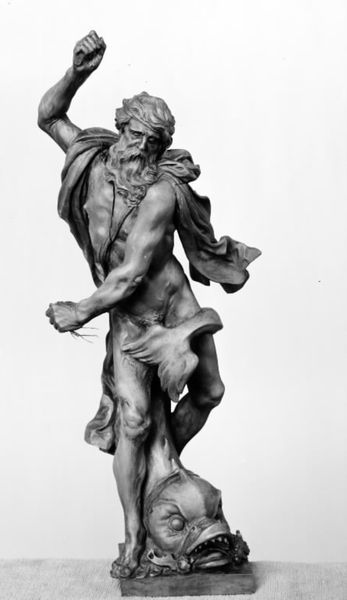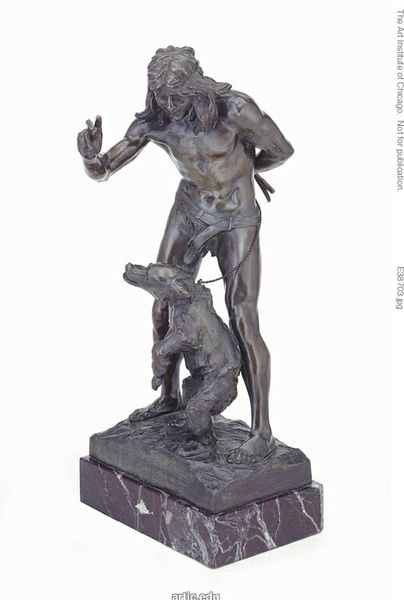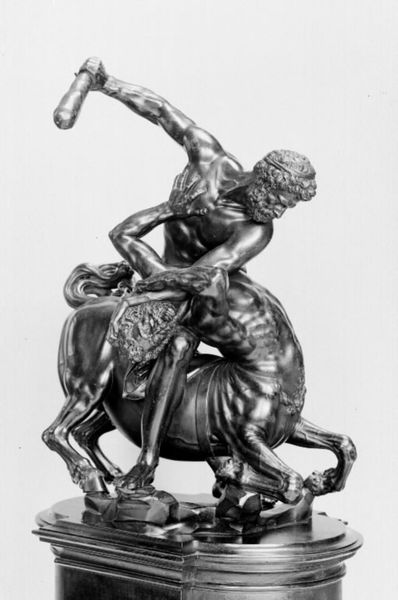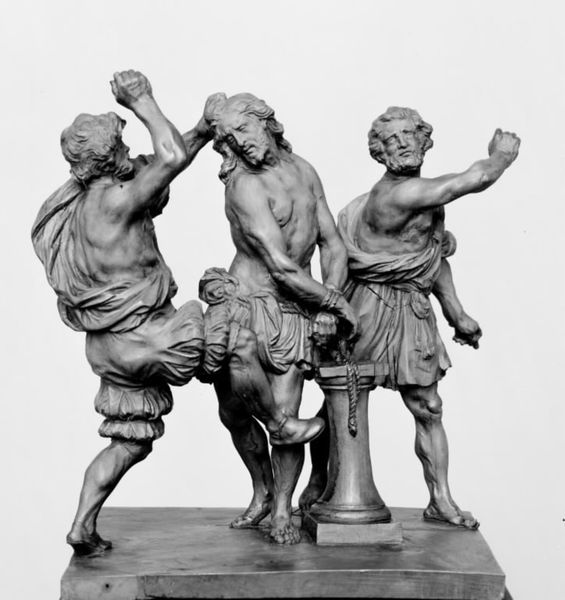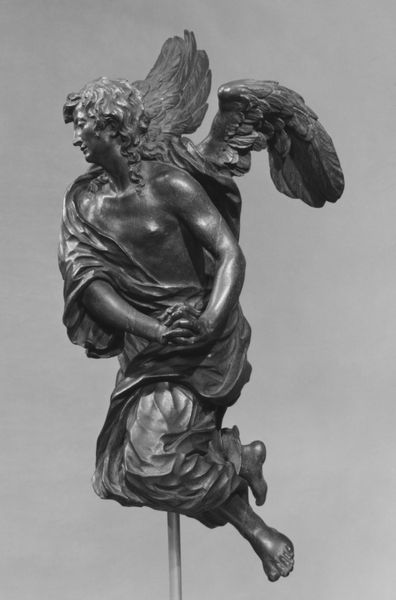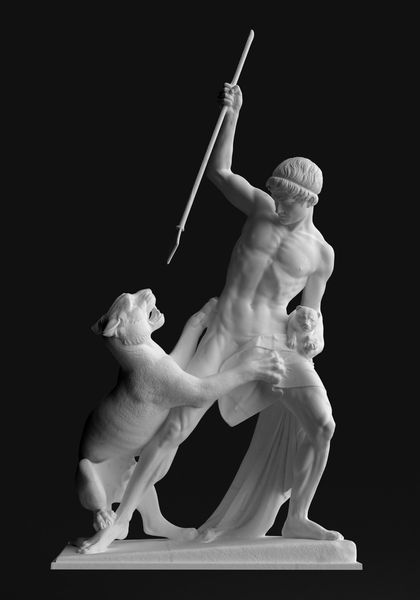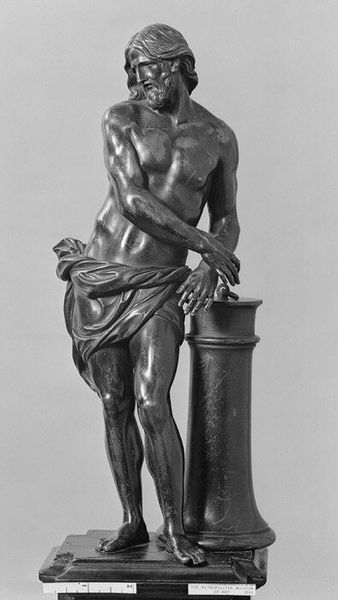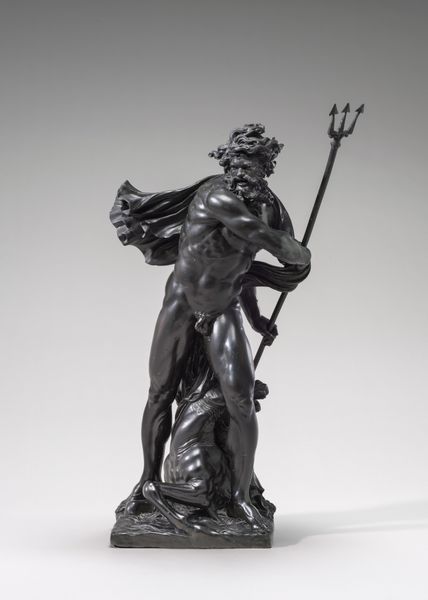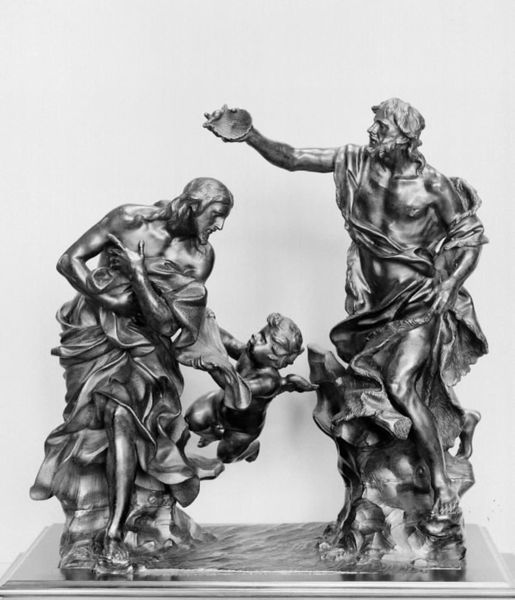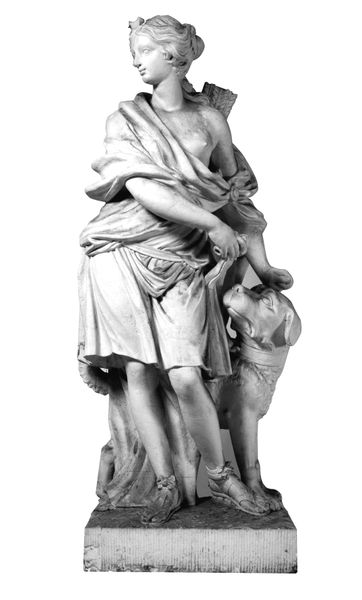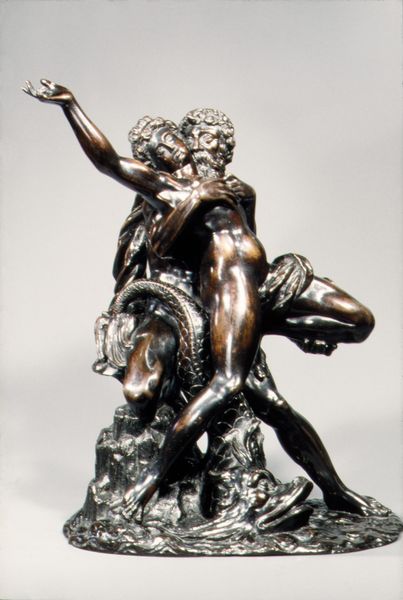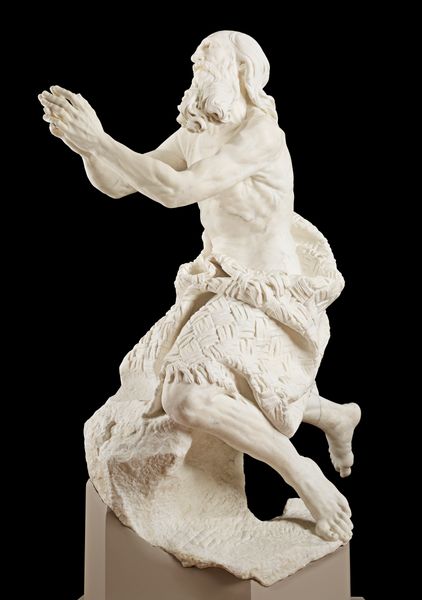
bronze, sculpture
#
sculpture
#
bronze
#
mannerism
#
figuration
#
sculpture
#
history-painting
#
nude
Dimensions: 58 cm (height) x 39.5 cm (width) x 23.2 cm (depth) (Netto)
Curator: Let's turn our attention to "Laocoön," a bronze sculpture crafted by Adriaen de Vries sometime between 1560 and 1626. It's a remarkable piece residing here at the SMK, Statens Museum for Kunst. Editor: What immediately strikes me is the dynamism, the tension practically radiating off the bronze. It’s quite visceral, the way the figure strains against the constricting snakes. Curator: The work is steeped in historical context, rooted in the story of Laocoön, a Trojan priest who warned against bringing the Trojan Horse into the city. This warning, a direct challenge to power, ultimately led to his and his sons' gruesome demise, strangled by sea serpents sent by the gods. It raises questions about the cost of dissent and the vulnerability of truth-tellers facing powerful opposition. Editor: Absolutely. And seeing it in bronze— the cool, reflective surface emphasizing the strained muscles and anguished face —makes you think about the process involved. How de Vries manipulated this material to express such intense suffering? The very act of shaping metal to depict flesh being constricted feels significant. There’s an inherent violence in the act of creation itself, isn’t there? Curator: The choice of bronze also speaks volumes. Bronze lends the work a timeless quality, aligning it with classical ideals of beauty and strength, but here those ideals are tragically subverted by the horror of the scene. It's a poignant commentary on the illusion of power and the inevitability of suffering. De Vries masterfully layers classical form with emotional complexity. Editor: And there’s the casting itself. I wonder about the lost-wax process he might have used, the skilled labor needed to achieve such detail in the serpent scales and the anguished expression. These aren't just aesthetic choices; they represent a significant investment of skill, resources, and time, embedding societal values related to labor and expertise within the artwork itself. Curator: It highlights how artistic expression is always entwined with the realities of material production. Considering this in our modern socio-political landscape can lead us to rethink our perspectives. Editor: Precisely, acknowledging the human effort helps avoid romanticising this brutal historical moment, keeping the artwork grounded to its era and material realities. Curator: Examining "Laocoön" offers us a powerful lens through which we might better view complex issues surrounding identity and power. Editor: Yes, by paying attention to material, process, and labor involved, we are prompted to re-evaluate how narratives of trauma and strength materialize in our own world today.
Comments
No comments
Be the first to comment and join the conversation on the ultimate creative platform.

